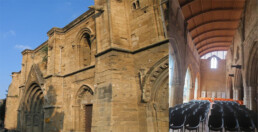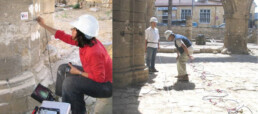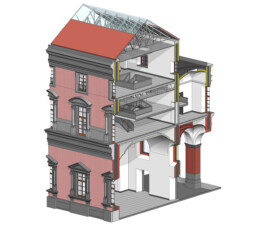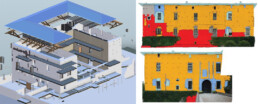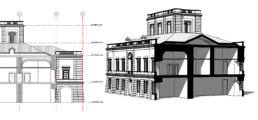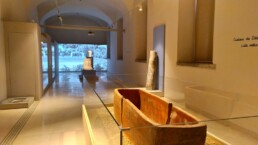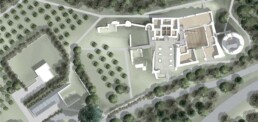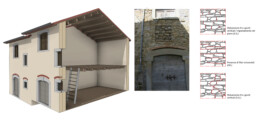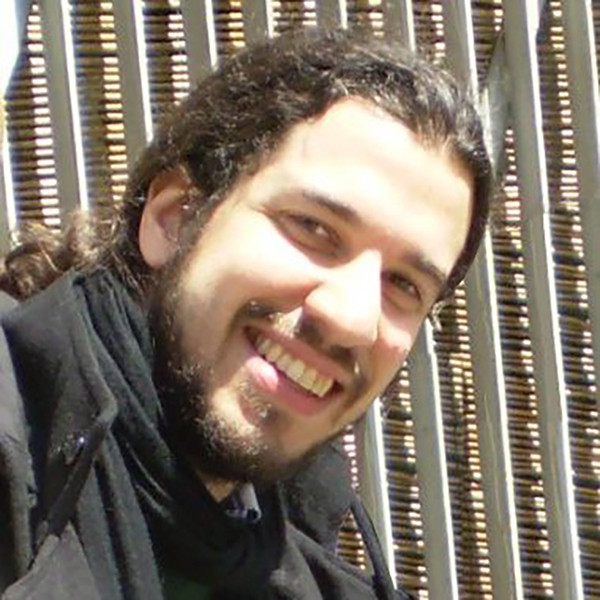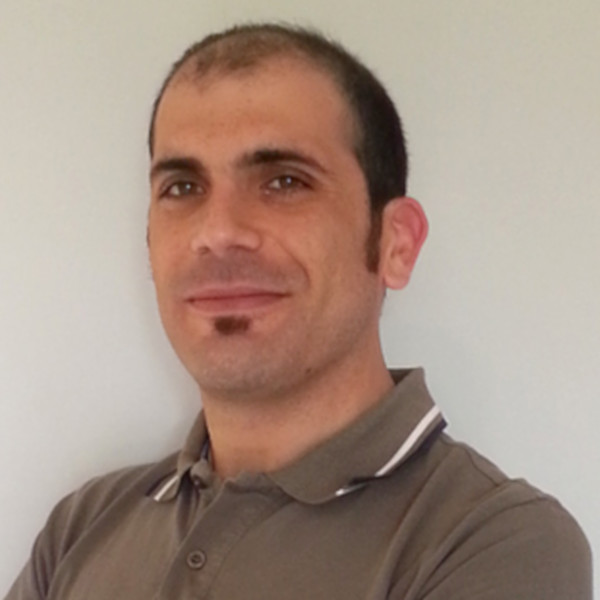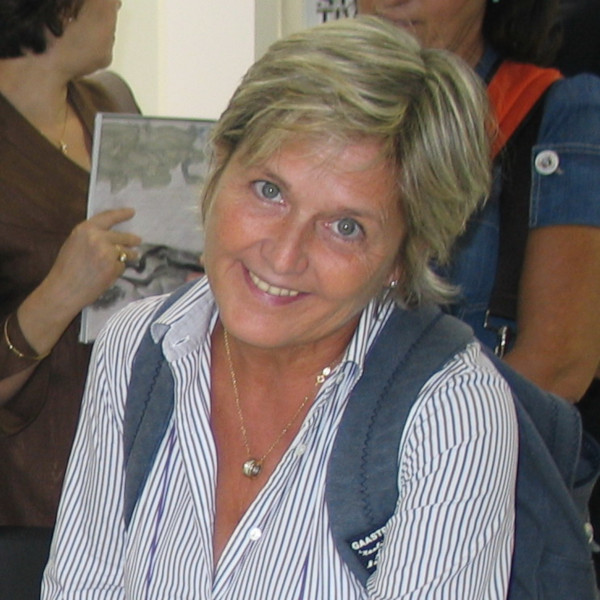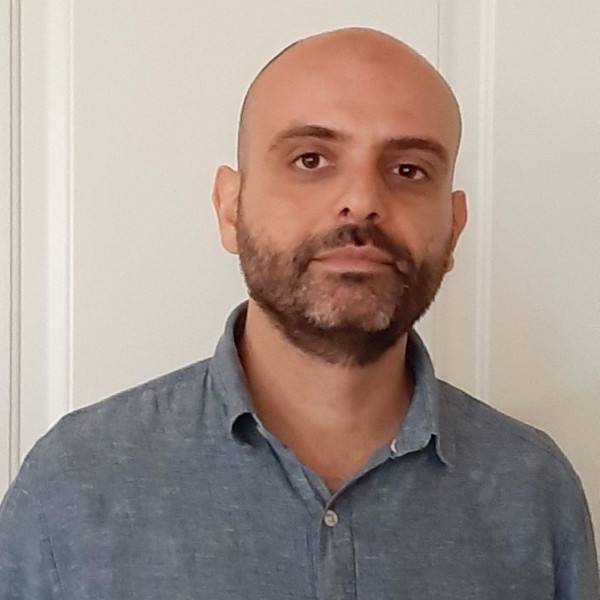BUILT HERITAGE ANALYSIS AND CONSERVATION, ICT AND BIM FOR HERITAGE, ENERGY AND ENVIRONMENTAL IMPROVEMENT, SIMULATION-BASED DESIGN
BHiLab | Built Heritage innovation Lab
Built Heritage innovation Lab is an interdisciplinary laboratory, open to researchers with different backgrounds, who exert their theoretical and applied skills to improve the knowledge and conservation of built heritage, by innovating analysis and intervention procedures through ICT methodologies’ integration.
The research group’s distinctiveness lies in its ability, developed over the years, to deal with the overall workflow of operations defined as “building analysis”, from the acquisition of multi-scale data, to their post-processing and subsequent integration within semantically enriched digital representations of information.
This workflow path is completed with the development of predictive models through MCDA (Multi Criteria Decision Analysis) decision support tools to evaluate preventive conservation solutions with holistic approaches, useful for understanding the feasibility and compatibility of planned interventions on listed buildings and historic centres.
A strategic vision characterised by internationally recognized scientific results, e.g. Europa Nostra Award awarded in 2009.
BHiLab is currently engaged in numerous research projects, both at the national and European level, and in research activities addressing key topics for the innovation of re-functionalization processes of built heritage and for the fight against climate change, within an integrated and sustainable conservation approach of buildings and urban areas.
In particular, the lines of research of BHiLab move in the following directions:
- development and application of methodologies for survey and analysis of the architectural, structural and functional characteristics of buildings, for the quantitative and qualitative assessment of damage and for the identification technical and construction deficiencies, if any. Development of strategies for restoration projects and buildings and historic centres’ reuse. Definition of protocols for structures’ consolidation and materials’ conservation;
- management of diagnostic, geometric, structural, MEP, functional, energy-environmental information and general conservation state of built heritage, with the aim of ICT platforms, to enhance an original approach to Heritage Building Information Modelling - HBIM. This process involves interoperable numerical and parametric 3D-modelling, with specialized information databases, including the integration of monitoring and real-time decision support systems based on IoT;
- analysis and energy-environmental improvement of historical buildings and their technological adaptation, including via Simulation-Based Design;
- development of new applications and strategies for museum spaces’ design and for the conservation, adaptation and fruition of archaeological sites, with innovative design solutions for Exhibit, particularly attentive to the themes of accessibility and Universal Design.
BHiLab is part of DTC LAZIO Centre of Excellence, which comprises 12 THEMATIC networks of high-tech laboratories, with specific expertise and qualifications in the varied areas of interest of DTC. E. Gigliarelli, together with C. Bianchini (Sapienza University of Rome), coordinates la the Network 10 "Digital technologies for architecture, territorial knowledge, urban regeneration, design".
For many years, BHiLab has been collaborating with the High Technology Research Centre for Sustainable Construction STRESS, based in Naples. The collaboration with BHiLab, carried out over the years with numerous regional projects (Metrics, Smartcase, Provaci, Strit, Earth Maps Service, CrossBow, and others) and currently with Prosit project, aims to develop and implement technologies for the restoration and valorization of cultural heritage, following a multidisciplinary approach, with particular attention to methodologies for the diagnostics and protection of built heritage and archaeological sites.
BHiLab Staff
Associati al BHiLab
Giovanni Cangi, Università Roma Tre, Claudio Intrigila, Università Tor Vergata, Anna Moreno, Presidente IBiMI | Istituto per il Building Information Modelling Italia, già dirigente di ricerca ENEA
Collaborators
Leo Lorenze
How to contact us
bhilab@ispc.cnr.it
Equipment
Workstation/LAPTOP; 3Deye; Leica BLK2GO portable laser scanner; Faro M70 laser scanner; Sony and Nikon digital cameras; UAV; Software for: visual programming language, modelling, photogrammetry, BIM/CAD, energy analysis/simulation, sharing environments.
Discover the BHiLab
Projects and Research activities
-
- BEEP – BIM for Energy Efficiency in the public sector.
- IDEHA – Innovation for Data Elaboration in Heritage Areas.
- HBIM4MANN – Progetto per la realizzazione di una piattaforma HBIM (Heritage Building Information Modeling) del Museo Archeologico Nazionale di Napoli, finalizzata alla documentazione e gestione dei dati architettonici, museali e alla gestione dei servizi.
- PRO-SIT – PROgettare in SostenibilITà qualificazione e digitalizzazione in edilizia.
- SSHOC – Social Sciences & Humanities Open Cloud. Progetto europeo H2020-INFRAEOSC-2018-2020; Partecipazione a WP3 e WP5.
- TECH-START– Key enabling TECHnologies and Smart environmenT in the Age of gReen economy – Convergent innovations in the open space/building system for climaTe mitigation.
- E-RIHS.it LAZIO – Progetto co-finanziato POR FESR Lazio 2014-2020
- MAECI Albania – Tecnologie multidisciplinari per lo studio e la conservazione di monasteri post bizantini in Albania meridionale.
- MAECI Giordania – Il patrimonio delle strutture nei siti archeologici giordani. Partecipazione al gruppo di studio su aspetti costruttivi, conservazione e valorizzazione.
- BILATERALE ALBANIA – Multidisciplinary Technologies for the Conservation and Valorisation of Mediterranean Sites and Cultural Landscapes: Drinos River Valley (Al) and Amalfi Mills Valley (It). Progetto Bilaterale CNR in collaborazione con il Ministero della Cultura dell’Albania (ICM).
- HBIM4lazioHERITAGE – Sistema informativo integrato HBIM per la conservazione e la gestione di siti culturali nel Lazio. POR FESR Lazio 2014 – 2020 (Azione 1.2.1). Progetti Gruppi di Ricerca 2020.
- INT4CT – hIstory coNstrucTion for beauty CommunicaTion. Sistema digitale integrato per la conoscenza, la conservazione attiva, la divulgazione e la fruizione in sicurezza del patrimonio e del paesaggio. Progetto finanziato nell’ambito di DTC Lazio | Intervento TE 1: Attuazione degli interventi programmatici e dei nuovi interventi relativi al Distretto Tecnologico per le nuove tecnologie applicate ai beni e alle attività culturali.
For further information on ISPC research activities click the button.
Main collaborations
Universities
- Egypt Japan University of Science and Technology, Department of Computer Science and Engineering
- Oxford Brookes University, Department of Real Estate and Construction
- Peking University, Department of Urban and Regional Planning
- Università degli Studi di Roma La Sapienza, Dipartimento di Storia disegno e restauro dell’architettura DSDRA
- Sapienza -Università di Roma, Dipartimento Pianificazione Design e Tecnologia dell’architettura PDTA
- Università degli Studi di Napoli Federico II, Dipartimento di Architettura, Dipartimento di Strutture per l’Ingegneria e l’Architettura
- Università degli Studi di Ferrara, Dipartimento di Architettura
- Università degli Studi di Roma Tor Vergata, Dipartimento di Ingegneria dell’Impresa
- Università Politecnica delle Marche, Facoltà di Ingegneria
- Università di Macerata, Dipartimento di Studi Umanistici
- Università degli Studi di Bologna, Dipartimento di Storia Culture Civiltà
- Università degli Studi di Chieti-Pescara, Dipartimento di Scienze psicologiche, della salute e del territorio
- Università del Salento, Dipartimento di Ingegneria per l’innovazione
- University of New South Wales, Department of Built Environment
- Xi’An Jiaotong Liverpool University, Department of Architecture and Design
Museums
- Museo Archeologico Nazionale di Napoli
- Museo Etno Antropologico, Castello arabo normanno, Castellammare del Golfo
- Museo Irpino, ex carcere borbonico, Avellino
Istitutions
- Agenzia del Demanio
- Ambasciata italiana a Tirana
- Avvocatura Generale dello Stato
- Cyprus Institute: The Energy, Environment and Water Research Center, Science and Technology in Archaeology and Culture Research Center
- Istituto Nazionale dei Patrimonio Culturale di Tirana IMK
- Istituto Valenciano de la Edificaciòn
- Lebanese Center for Cultural Heritage Preservation
- Ministero “Sustainable Development and Tourism” del Montenegro
- Palestinian Center for Cultural Heritage Preservation
- The Royal Scientific Society, National Energy Research Center
Software companies, product companies and design companies
- ACCA Software
- Engeko
- Innovaway s.r.l.
- Iperboole s.r.l.
- Logical Soft
- Minnucci Associati s.r.l.
- Syremont s.p.a.
Organizations
- IBPSA – International Building Performance Simulation Association
- IBIMI – Institute for BIM Italy – Italian Building Smart chapter
- SITdA – Società Italiana Tecnologia dell’Architettura
Main publications
F. Calcerano, S. Thravalou, L. Martinelli, K. Alexandrou, G. Artopoulos, E. Gigliarelli, Energy and Environmental Improvement of Built Heritage: HBIM Simulation-Based Approach Applied to Nine Mediterranean Case-Studies, “Building Research & Information”, 2023, https://doi.org/10.1080/09613218.2023.2204417
L. Martinelli, F. Calcerano, F. Adinolfi, D. Chianetta, E. Gigliarelli, Open HBIM-IoT Monitoring Platform for the Management of Historical Sites and Museums. An Application to the Bourbon Royal Site of Carditello, “International Journal of Architectural Heritage”, 2023, 1–18, https://doi.org/10.1080/15583058.2023.2272130
E. Gigliarelli, L. Martinelli, F. Calcerano, An Integrated Approach for Energy and Environmental Improvement of Built Heritage Through Building Information Modeling (BIM), in A. Sayigh (ed.), Mediterranean Architecture and the Green-Digital Transition Innovative Renewable Energy. Cham: Springer International Publishing 2023, 569–78, https://doi.org/10.1007/978-3-031-33148-0_45
C. Cornaro, G. Bovesecchi, F. Calcerano, L. Martinelli, E. Gigliarelli, An HBIM Integrated Approach Using Non-Destructive Techniques (NDT) to Support Energy and Environmental Improvement of Built Heritage: The Case Study of Palazzo Maffei Borghese in Rome, “Sustainability” 15 (14): 11389, 2023, https://doi.org/10.3390/su151411389
L. Martinelli, F. Calcerano, E. Gigliarelli, Methodology for an HBIM Workflow Focused on the Representation of Construction Systems of Built Heritage, “Journal of Cultural Heritage”, 55, 2022, 277–89, https://doi.org/10.1016/j.culher.2022.03.016
M. Calvano, L. Martinelli, F. Calcerano, E. Gigliarelli, Parametric Processes for the Implementation of HBIM—Visual Programming Language for the Digitisation of the Index of Masonry Quality, “ISPRS International Journal of Geo-Information”, 11 (2): 93, 2022, https://doi.org/10.3390/ijgi11020093
S. Cursi, L. Martinelli, N. Paraciani, F. Calcerano, E. Gigliarelli, Linking External Knowledge to Heritage BIM, “Automation in Construction” 141: 104444, 2022, https://doi.org/10.1016/j.autcon.2022.104444
C. Di Biccari, F. Calcerano, F. D’Uffizi, A. Esposito, M. Campari, E. Gigliarelli, Building Information Modeling and Building Performance Simulation Interoperability: State-of-the-Art and Trends in Current Literature, “Advanced Engineering Informatics” 54: 101753, 2022, https://doi.org/10.1016/j.aei.2022.101753
E. Gigliarelli, F. Calcerano, L. Martinelli, G Artopoulos, S. Thravalou, K. Alexandrou, Methodology for the Energy Renovation of Heritage Buildings Using BIM, Rome 2022, CNR edizioni
E. Gigliarelli, F. Calcerano, L. Cessari, Heritage Bim, Numerical Simulation and Decision Support Systems: An Integrated Approach for Historical Buildings Retrofit. 2017, Energy Procedia, Climamed 2017 – Mediterranean Conference of HVAC Historical buildings retrofit in the Mediterranean area (Matera, Italy 12-13 May 2017), 2017, 133, 135–44, https://doi.org/10.1016/j.egypro.2017.09.379
